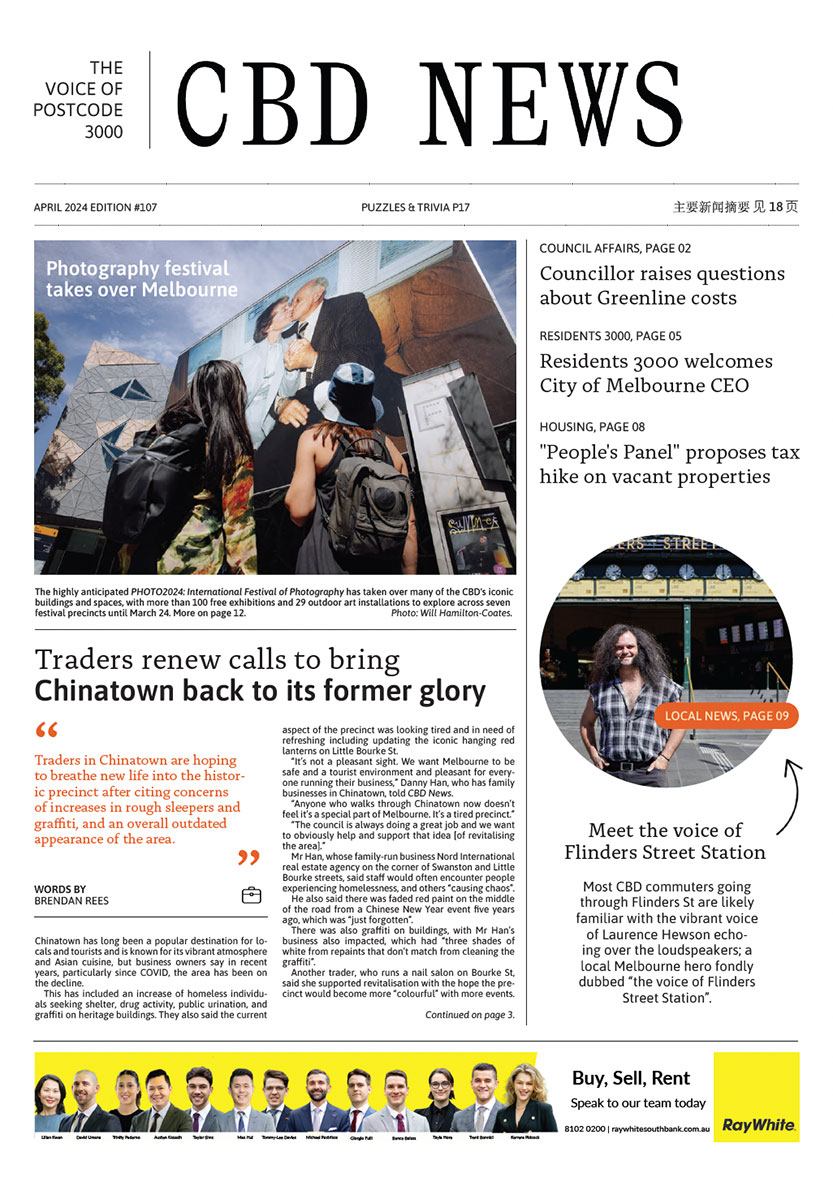In the words of Carole King: “City streets, the stories that they tell”
When the Hoddle Grid was superimposed on the early Melbourne landscape in 1837 it did not take into account the spiritual and cultural connections to this land of its traditional custodians, the Wurundjeri Woi Wurrung and Bunurong Boon Wurrung Peoples of the Eastern Kulin.
Nor did it consider the lie of the land in its bid to recreate a sense of “home”, of the familiar in an unfamiliar colonial context. It ignored the fact that Elizabeth St was laid out along the line of an old creek bed in what was the base of a valley, the lowest part of the CBD. Add to that the man-made developments at the Yarra River end of the street that created barriers to the natural flow of water down to the river and you have a main thoroughfare often boggy and impassable in wet weather in the days before the road surfaces were bituminised.
The potential for flooding has always been there. Who could forget the dramatic flash flood of February 1972, for example, when the CBD was inundated by nearly 80 mm of rain in an hour. That afternoon, just as peak hour began, Elizabeth St became a fast flowing, one-and-a-half-metre-high waterway. Pedestrians were knocked off their feet and parked cars were swept away by the swirling torrent of water that moved in white-capped waves down towards Flinders Street Station. Spectacular. Disruptive. And not something city workers expected that morning as they headed in to work, in all likelihood walking up a dry and benign-looking Elizabeth Street from Flinders Street Station.
This photograph takes us back to a different Elizabeth St. It’s a similar time of year, but about 60 years earlier. Despite being the north-south spine of the CBD, this version of Elizabeth St appears tranquil, unhurried. There are no traffic lights and pedestrians do not have to dodge vehicles as they cross the road even though they share the roadway with the West Melbourne cable tram, a car and a horse-drawn vehicle.
The imposing Greek columns of the Royal Bank building on the south-east corner of Collins St adds gravitas to this part of Elizabeth St. Further down towards the station you can see a sign for Craigs. This is Craig, Williamson Pty Ltd, a thriving drapery, clothing and furnishings business that traded for more than 60 years before it closed in 1937. Across the road is the Brooks, Robinson Building, home of building products merchants who sold supplies such as wallpapers, paints, varnishes and oils. They also ran a well-regarded stained-glass studio from their premises.
Just around the corner in Collins St is The Block Arcade and the area where the those who wanted to be seen (and admired) donned their glad rags and took part in the ritual known as “doing the block”. To get there from Elizabeth St, they would have walked past the long-gone Ottoman-style domed drinking fountain that stands on the north-east corner of the intersection, mostly obscured here by pedestrians.
There are signs of a change in the air in this photograph. Prominent on the left is a large telegraph pole – modern technology has come to Melbourne. The clock tower of the bustling Flinders Street Station dominates the southern skyline. On the western side of the street at the Flinders Lane corner is Australia’s answer to the skyscraper – the 12-storeyed Queen Anne style Australian Building, built at the end of the 1880s boom and the tallest building in Melbourne until 1929. It provides the perfect place for wall advertising, the Sunlight Soap “Good for the clothes. Good for the hands that wash the clothes” sign dominating the sightline of every person heading down to Flinders Street Station.
Nudging its way into the photograph is 307 Elizabeth St, the premises of R. White, shoe retailer. Look carefully and you can just see the sign for the Australian Photo-Play Company which dates the photo to 1911 or 1912, the years in which the company operated. Although only in business for 12 months, this ambitious Australian film company, with premises in Sydney and Melbourne, was established by Stanley Crick and produced something like 20 films – all silent movies, of course – before closing down in mid-1912 due to distribution problems.
This is the southern end of Elizabeth St. It’s narrow and busy by early 20th century standards. Do an about face and travel north and you continue past the GPO and today’s Bourke Street Mall, past the bustling Queen Victoria Market, through Haymarket and into the majestic, boulevard-like Royal Parade, past the hospital precinct and the University of Melbourne, until you reach the borders of Brunswick when you enter the narrow, congested confines of Sydney Rd.

Five boys arrested in alleged stolen vehicle






 Download the Latest Edition
Download the Latest Edition